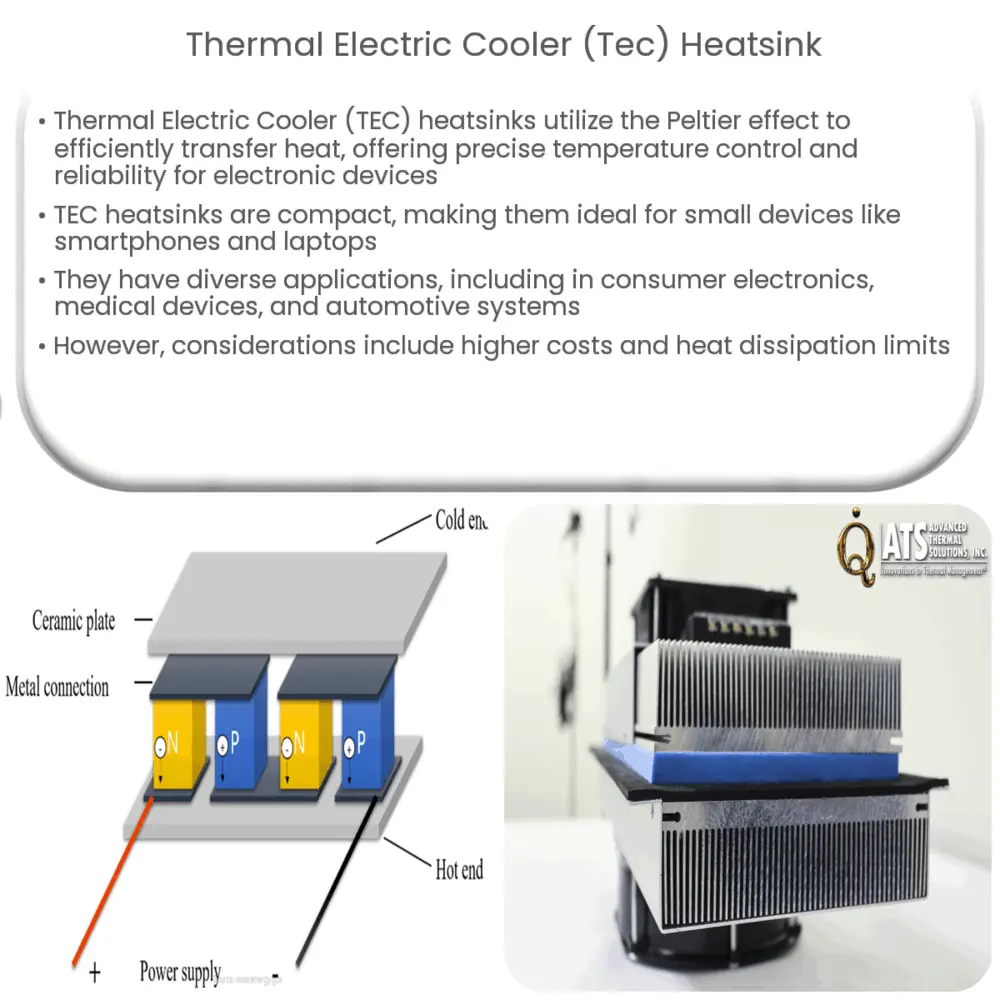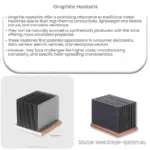TEC heatsinks efficiently cool electronic devices using the Peltier effect, offering precise temperature control and high reliability.

Thermal Electric Cooler (TEC) Heatsinks: An Innovative Solution for Efficient Cooling
In today’s world, electronic devices are becoming smaller and more powerful, which has led to an increased need for efficient cooling systems. One of the most promising solutions to this challenge is the Thermal Electric Cooler (TEC) heatsink. In this article, we will discuss the fundamentals of TEC heatsinks, how they work, and their benefits over traditional cooling methods.
Understanding TEC Heatsinks
A TEC heatsink is a cooling device that uses the Peltier effect to transfer heat from one side of the device to the other. The Peltier effect is a thermoelectric phenomenon that occurs when a voltage is applied across a junction of two different conductive materials, causing one side to heat up while the other side cools down. This heat transfer is facilitated by the movement of electrons across the junction, which also creates a temperature gradient.
In a TEC heatsink, this temperature gradient is used to create a cooling effect, as the hot side of the device is connected to a heat-absorbing material while the cold side is connected to a heat-releasing material. The result is an efficient and reliable cooling system that can maintain a stable temperature for electronic components, prolonging their lifespan and improving performance.
How TEC Heatsinks Work
A typical TEC heatsink consists of three main components: a thermoelectric cooler, a heat-absorbing material (commonly a copper or aluminum plate), and a heat-releasing material (usually a heatsink with fins or a heat pipe). The thermoelectric cooler is sandwiched between the two heat transfer materials, creating a continuous path for heat to flow from the hot side to the cold side.
When a voltage is applied to the thermoelectric cooler, electrons begin to flow across the junction, and the Peltier effect occurs. Heat is absorbed from the hot side and transferred to the cold side, where it is released into the surrounding environment. This process can be controlled by adjusting the voltage applied to the TEC, allowing for precise temperature regulation.
Benefits of TEC Heatsinks
TEC heatsinks offer several advantages over traditional cooling methods, such as air and liquid cooling systems. Some of these benefits include:
- Efficiency: TEC heatsinks are highly efficient, as they can transfer large amounts of heat with minimal energy consumption. This can lead to lower operating costs and reduced environmental impact.
- Precision: The temperature of a TEC heatsink can be easily controlled by adjusting the voltage applied to the thermoelectric cooler, allowing for precise temperature regulation and preventing overheating.
- Compactness: TEC heatsinks are relatively small and lightweight, making them an ideal solution for cooling compact electronic devices such as laptops, smartphones, and wearables.
- Reliability: With no moving parts, TEC heatsinks are less prone to mechanical failure, resulting in longer lifespans and reduced maintenance requirements.
Applications of TEC Heatsinks
TEC heatsinks are versatile and can be used in a wide range of applications, including:
- Consumer Electronics: TEC heatsinks are suitable for cooling high-performance laptops, gaming consoles, and smartphones, where high heat dissipation and compact form factors are required.
- Medical Devices: Precision temperature control is essential in many medical devices, such as incubators and analytical instruments. TEC heatsinks can provide the required stability and accuracy.
- Telecommunications: TEC heatsinks can help maintain optimal operating temperatures for high-performance communication equipment, such as base stations, routers, and switches, improving their reliability and performance.
- Automotive: Electric and hybrid vehicles require efficient and compact cooling systems for their batteries and power electronics. TEC heatsinks can offer a reliable solution in these applications.
Limitations and Challenges
While TEC heatsinks offer several advantages, there are some limitations and challenges that need to be considered when implementing them:
- Cost: TEC heatsinks can be more expensive than traditional cooling solutions due to the cost of thermoelectric materials and the need for precise voltage control systems.
- Heat Dissipation Limits: TEC heatsinks have a maximum heat transfer capacity, which can be a limitation for high-power applications. In such cases, they may need to be used in combination with other cooling methods to achieve the desired cooling performance.
- Power Consumption: Although TEC heatsinks are energy-efficient, they still consume power to operate, which can contribute to the overall power consumption of a device.
Conclusion
Thermal Electric Cooler (TEC) heatsinks offer a promising solution to the ever-growing demand for efficient and compact cooling systems in electronic devices. With their ability to provide precise temperature control, high efficiency, and reliability, they are well-suited for a wide range of applications, from consumer electronics to medical devices and automotive systems. However, it is important to consider the limitations and challenges associated with TEC heatsinks, such as cost and heat dissipation limits, when selecting the most appropriate cooling solution for a specific application.
As research continues and advances are made in thermoelectric materials and cooling technologies, it is expected that TEC heatsinks will become even more efficient and cost-effective, further expanding their potential applications and benefits in the world of electronics cooling.



